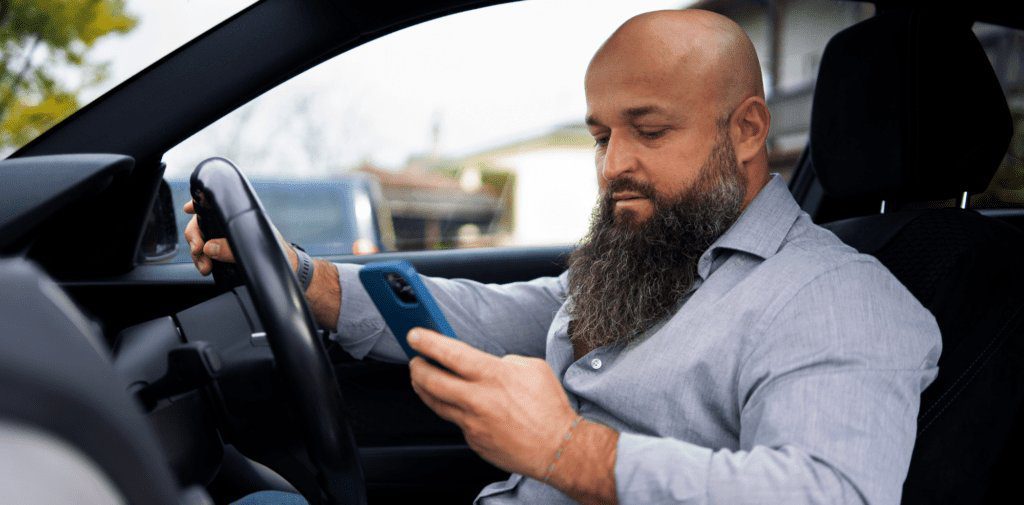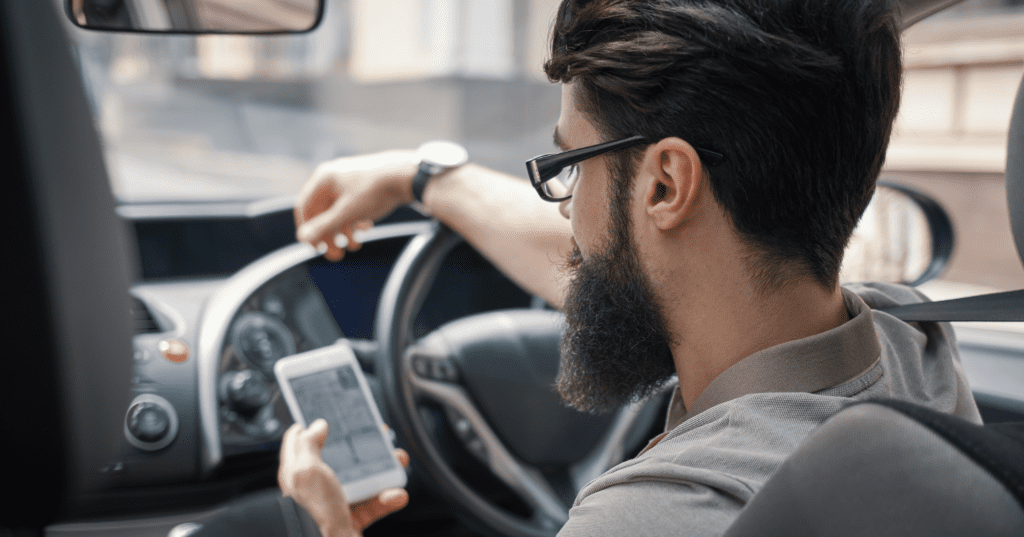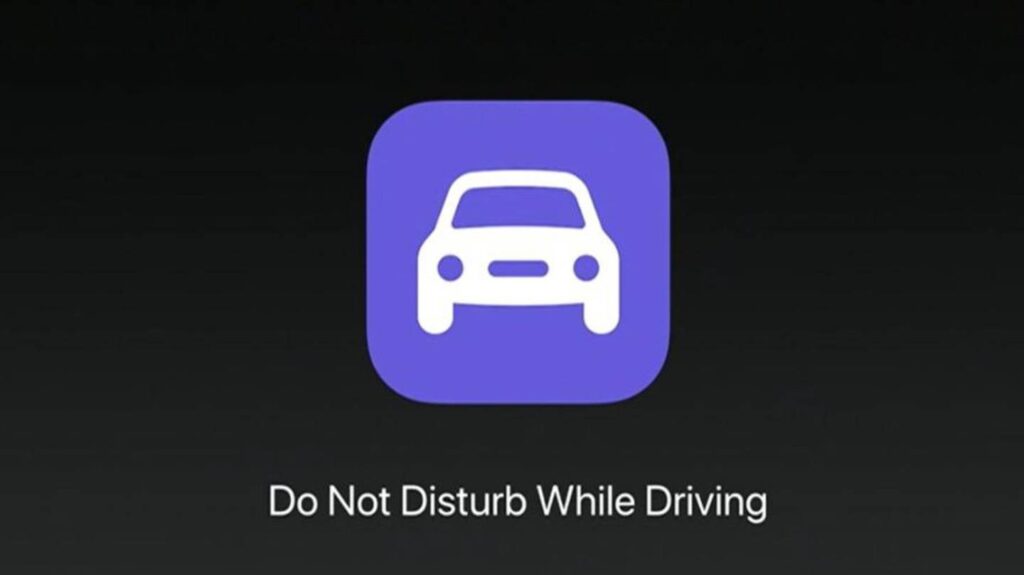
Understand the Dangers
Driving requires your full attention. Any distraction can lead to serious accidents, and using a mobile phone while driving is one of the most dangerous distractions.
It takes your eyes off the road, your hands off the wheel, and your mind off driving. Despite the risks, many drivers continue to use their phones while on the road.

Understanding these dangers is the first step towards preventing mobile phone use while driving.
In the UK, the statistics regarding mobile phone-related accidents are alarming. According to the Department for Transport, in 2019 alone, there were 103 fatal accidents where the driver was using a mobile phone.
Additionally, there were 385 serious accidents and 1,494 slight accidents. These numbers illustrate the grave impact that using a mobile phone can have on road safety.

Moreover, studies have shown that using a mobile phone while driving increases the risk of a collision by up to four times.
This risk is not only limited to making calls but also extends to texting, using social media, or even checking emails.
These activities divert your attention and significantly increase the likelihood of an accident.
Impact on Reaction Time
Using a mobile phone while driving severely impacts your reaction time. Reaction time is the interval between perceiving a hazard and responding to it.
Research has shown that drivers using a mobile phone have slower reaction times than those who are not distracted. On average, a driver’s reaction time is delayed by 50% when they are using a mobile phone.
This delay can be the difference between avoiding a collision and being involved in one.
When you use a mobile phone, your brain has to multitask between driving and whatever activity you are doing on the phone.
This division of attention leads to slower responses to traffic signals, pedestrians, and other vehicles. Even a momentary distraction can result in a severe accident.
Legal Consequences in the UK
In the UK, the law is very clear about the use of mobile phones while driving. It is illegal to hold a phone or sat nav while driving or riding a motorcycle.
This law applies even if you are stopped at traffic lights or queuing in traffic. The only exception is if you are safely parked or need to call 999 or 112 in an emergency and it is unsafe or impractical to stop.
It’s illegal to hold and use a phone, sat nav, tablet, or any device that can send or receive data, while driving or riding a motorcycle.
This means you must not use a device in your hand for any reason, whether online or offline.
For example, you must not text, make calls, take photos or videos, or browse the web.
The law still applies to you if you’re:
- stopped at traffic lights
- queuing in traffic
- supervising a learner driver
- driving a car that turns off the engine when you stop moving
- holding and using a device that’s offline or in flight mode
Source: Department for Transport
If caught using a mobile phone while driving, you can receive six penalty points on your licence and a £200 fine.
For new drivers who have held their licence for less than two years, this means losing their licence.
If your case goes to court, you could face disqualification from driving and a maximum fine of £1,000, or £2,500 if you are driving a bus or a goods vehicle.
The legal consequences are severe because the risks associated with using a mobile phone while driving are significant.
The law aims to deter drivers from engaging in this dangerous behaviour to ensure safer roads for everyone.
Use Technology to Your Advantage
While mobile phones can be a significant distraction, they can also be part of the solution.
Using technology to your advantage can help you avoid the temptation to use your phone while driving.
There are several features and tools available that can assist you in staying focused on the road.
Activating Do Not Disturb Mode
One of the simplest and most effective ways to prevent mobile phone use while driving is to activate the Do Not Disturb mode on your phone.
Most smartphones have a Do Not Disturb feature that silences calls, texts, and notifications.
This feature can usually be customised to turn on automatically when you start driving.

For iPhone users, the Do Not Disturb While Driving feature can be activated through the settings menu.
Set up Driving Focus for iOS users
- Go to Settings
- Focus
- tap the Add button
- then tap Driving
- Tap Customise Focus
When enabled, your phone will detect when you are driving and will automatically silence notifications.
You can also set up an auto-reply to let people know you are driving and will get back to them later.
Android users can use similar features, such as the Driving Mode in Google Assistant.
Set up Driving Focus for Android users
- Go to Settings
- Do Not Disturb
- Do Not Disturb While Driving
- Activate
- Automatically
This mode can silence notifications and send auto-replies to texts. Some Android phones also have built-in driving modes that can be customised to suit your needs.
By reducing the number of distractions from your phone, you can keep your attention on the road and avoid the temptation to check messages or notifications while driving.
Using In-Car Bluetooth for Hands-Free Calls
While it is best to avoid making calls while driving, there are times when it may be necessary.
In such cases, using in-car Bluetooth for hands-free calls can be a safer alternative.
Most modern cars are equipped with Bluetooth technology that allows you to connect your phone to the car’s audio system.

When using Bluetooth, you can make and receive calls without having to hold your phone.
This allows you to keep both hands on the wheel and your eyes on the road. Many cars also have steering wheel controls that let you answer or end calls without taking your hands off the wheel.
If your car does not have built-in Bluetooth, you can purchase an aftermarket Bluetooth kit.
BUY: Bluetooth aftermarket kits from Amazon
These kits are easy to install and can provide similar functionality. It is important to remember that even hands-free calls can be distracting, so it is best to keep calls brief and avoid them if possible.
Another useful tool for preventing mobile phone use while driving is the voice-activated assistant.
Most smartphones come with built-in voice-activated assistants like Siri, Google Assistant, or Alexa.
These assistants can help you with:
- Navigation
- Sending texts
- Making calls without having to touch your phone.
For example, you can use your voice-activated assistant to set up navigation to your destination.
- Simply say, “Hey Siri, navigate to [destination]” or “Ok Google, take me to [destination]”. The assistant will open your preferred navigation app and start giving you directions.
- You can also use voice commands to send texts or make calls. For instance, you can say, “Hey Siri, text [contact] that I’m on my way” or “Ok Google, call [contact]”.
The assistant will handle the task for you, allowing you to keep your hands on the wheel and your eyes on the road.
Using voice-activated assistants can help you stay connected and navigate while driving without the need to physically interact with your phone. This reduces distractions and helps you stay focused on driving.
Practical Tips to Stay Focused on Driving
Staying focused on driving is crucial for your safety and the safety of others on the road. Here are some practical tips to help you avoid mobile phone use and other distractions while driving:
Plan your route ahead of time: Before you start driving, set up your navigation system and review the route. This way, you won’t need to fiddle with your phone or GPS while on the road.
Set up a driving playlist: Choose your music or podcasts before you start driving. This will prevent you from searching for songs or changing tracks while driving.
Inform your contacts: Let your friends and family know that you won’t be available to respond to calls or texts while driving. This can reduce the temptation to check your phone.
Keep your phone out of reach: Place your phone in the glove compartment, a bag, or another location where you can’t easily access it while driving.
Use apps to block distractions: There are various apps available that can block notifications and calls while you are driving. Some apps even provide reports on your driving behaviour to help you stay accountable.
Take breaks: If you need to use your phone, find a safe place to pull over and stop before doing so. Taking breaks during long drives can also help you stay alert and focused.
Educate passengers: If you have passengers in the car, let them know the importance of avoiding distractions. Ask them to help you by not using their phones in a way that could tempt you to look at your own.
Practice mindfulness: Stay present and focused on the task of driving. Avoid letting your mind wander or getting lost in thought.
By incorporating these practical tips into your driving routine, you can reduce the risk of accidents and ensure a safer driving experience for yourself and others on the road.
Develop Better Habits
Developing better habits is essential for preventing mobile phone use while driving.
These habits not only help you stay focused on the road but also create a safer driving environment for everyone. Here are some effective strategies to cultivate better habits.

Establishing a Pre-Driving Routine
One of the most effective ways to prevent mobile phone use while driving is by establishing a pre-driving routine.
Before you even start your car, take a few moments to prepare yourself and your vehicle for the journey ahead. This routine can include:
- Setting your navigation: Input your destination into your GPS or navigation app before you start driving. This way, you won’t need to adjust it while on the move.
- Adjusting your mirrors and seat: Ensure that your mirrors and seat are properly adjusted to avoid distractions while driving.
- Choosing your music or podcast: Select your playlist, podcast, or radio station before you begin driving. This prevents you from fiddling with your phone or car stereo.
- Activating Do Not Disturb mode: As mentioned earlier, activate the Do Not Disturb mode on your phone to silence calls and notifications.
- Reviewing your route: If you’re unfamiliar with your route, take a quick look at the map to familiarise yourself with major turns and landmarks.
By incorporating these steps into your routine, you minimise the need to interact with your phone while driving, allowing you to stay focused on the road.
Keeping Your Phone Out of Reach
Another simple yet effective habit is keeping your phone out of reach while driving.
When your phone is within arm’s reach, the temptation to check messages or answer calls can be strong.
To avoid this, place your phone in a location where you can’t easily access it, such as:
- The glove compartment: Lock your phone away in the glove compartment to remove the temptation altogether.
- A bag or purse: Place your phone in your bag or purse and store it in the back seat.
- The boot: For longer journeys, consider placing your phone in the boot of your car.
By keeping your phone out of sight and out of reach, you reduce the likelihood of being distracted by it while driving.
Informing Frequent Callers of Your Driving Schedule
If you frequently receive calls from family, friends, or colleagues, it’s important to inform them of your driving schedule.
Letting them know when you’ll be on the road can help them understand why you might not answer immediately. You can do this by:
- Sending a quick message before you start driving: Let your regular callers know that you’re about to drive and will return their call or message when you arrive at your destination.
- Setting up automatic replies: Use your phone’s Do Not Disturb or driving mode to send automatic replies to incoming messages. These replies can inform the sender that you’re driving and will get back to them later.
- Communicating your driving schedule: If you have a regular driving schedule, such as a daily commute, inform your frequent callers of these times. This helps them know when to expect you might be unavailable.
By keeping your regular contacts informed, you reduce the pressure to respond immediately and can focus on driving safely.
Education and Awareness
Education and awareness are key components in preventing mobile phone use while driving.
By educating yourself and others about the dangers and participating in awareness campaigns, you can contribute to creating a safer driving environment.

Attending Safe Driving Courses
One of the best ways to improve your driving habits is by attending safe driving courses.
These courses are designed to educate drivers about the risks associated with distractions, including mobile phone use.
They often provide practical tips and strategies for staying focused on the road. Benefits of attending these courses include:
- Enhanced driving skills: Learn advanced driving techniques and strategies to stay safe on the road.
- Increased awareness: Gain a deeper understanding of the risks associated with distracted driving.
- Insurance discounts: Some insurance companies offer discounts to drivers who have completed a safe driving course.
Look for local driving schools or organisations that offer these courses and consider enrolling to improve your driving habits.
Participating in Awareness Campaigns
Participating in awareness campaigns is another effective way to combat mobile phone use while driving.
These campaigns aim to educate the public about the dangers of distracted driving and promote safer driving behaviours. You can get involved by:
- Joining local or national campaigns: Many organisations run campaigns focused on reducing distracted driving. Participate in these campaigns by sharing their messages on social media, attending events, or volunteering your time.
- Promoting awareness at work: If your workplace has a large number of drivers, consider promoting awareness within your organisation. This can include organising talks, distributing educational materials, or setting up a safe driving pledge.
- Engaging in community efforts: Get involved in community efforts to promote safe driving. This can include speaking at local schools, participating in community events, or working with local authorities to improve road safety.
By participating in awareness campaigns, you help spread the message about the dangers of mobile phone use while driving and encourage others to adopt safer driving habits.
One of the most impactful ways to promote safe driving is by sharing knowledge with family and friends.
Many people may not be fully aware of the risks associated with using a mobile phone while driving, and your insights can help them understand the importance of staying focused. Here’s how you can share your knowledge:
- Discussing the dangers: Have open conversations with your family and friends about the risks of distracted driving. Share statistics, personal experiences, and practical tips for avoiding distractions.
- Leading by example: Demonstrate safe driving habits yourself. When your family and friends see you avoiding mobile phone use while driving, they are more likely to follow your example.
- Encouraging safe driving habits: Encourage your loved ones to adopt safe driving habits, such as using Do Not Disturb mode, keeping their phone out of reach, and informing frequent callers of their driving schedule.
- Providing resources: Share resources, such as articles, videos, or brochures, that highlight the dangers of distracted driving and offer tips for staying safe on the road.
By educating and encouraging those around you, you can create a ripple effect that promotes safer driving behaviours within your community.
Through developing better habits, participating in education and awareness efforts, and sharing knowledge with others, we can collectively reduce the incidence of mobile phone use while driving and make our roads safer for everyone.
It is a shared responsibility that requires commitment and action from each of us. By taking these steps, we can protect ourselves, our loved ones, and our fellow road users from the dangers of distracted driving.
Encourage Company Policies
Encouraging companies to adopt and enforce mobile phone policies can significantly reduce the risks associated with distracted driving among employees.
Given that many people drive as part of their work, implementing robust policies and educating employees on safe driving practices can lead to safer roads and a reduction in mobile phone-related accidents.

Implementing Mobile Phone Policies at Work
To foster a culture of safety, businesses should consider implementing mobile phone policies that clearly outline the expectations for employees regarding phone use while driving.
These policies should be comprehensive and enforceable, including guidelines such as:
- Prohibiting the use of handheld devices while driving.
- Requiring the use of hands-free technology for necessary communications.
- Encouraging employees to pull over safely if they need to use their phone.
- Establishing consequences for non-compliance with the policy.
Creating a formal written policy helps to set clear expectations and demonstrates the company’s commitment to safety.
It is important to communicate this policy to all employees and ensure that they understand the rules and the reasons behind them.
Educating Employees on Safe Driving
Educating employees on safe driving practices is a crucial aspect of any mobile phone policy.
Employers should provide regular training sessions that cover the dangers of mobile phone use while driving and offer practical tips for staying safe. This training can be delivered through workshops, seminars, or online courses.
Additionally, providing employees with educational materials such as pamphlets, posters, and emails can reinforce the training messages.
Sharing real-life stories and statistics about accidents caused by distracted driving can help employees understand the severe consequences and encourage them to follow the company’s mobile phone policy.
Monitoring Compliance and Providing Incentives
To ensure that employees adhere to the mobile phone policy, companies should consider monitoring compliance and offering incentives for safe driving behaviour. This can be achieved through various methods, including:
- Using telematics systems to track driving behaviour and mobile phone use.
- Conducting random spot checks or audits to ensure employees are following the rules.
- Providing rewards or recognition for employees who consistently demonstrate safe driving practices.
Incentives can be a powerful motivator. Companies might offer bonuses, additional leave days, or public recognition for employees who exhibit exemplary driving behaviour.
By rewarding safe driving, employers can create a positive culture around road safety and encourage all employees to prioritise safe practices.
Use Apps to Prevent Usage
In today’s digital age, using apps to prevent mobile phone usage while driving can be an effective strategy.
There are several apps available that can help drivers stay focused by blocking distractions, sending automatic replies, and monitoring driving behaviour.
These apps can be particularly useful for individuals who struggle to resist the temptation of using their phone while driving.

Overview of Safe Driving Apps
Several safe driving apps have been developed to help reduce the incidence of distracted driving.
These apps offer features such as blocking incoming calls and notifications, providing driving feedback, and even rewarding safe driving behaviour. Some popular safe driving apps include:
- DriveMode: This app automatically silences incoming calls and texts when it detects that you are driving. It also sends automatic replies to let others know you are on the road.
- Drivemode: This app offers a hands-free interface that allows you to use navigation, music, and messaging apps without touching your phone.
- LifeSaver: This app blocks phone use while driving and sends alerts to a designated contact if the driver tries to use their phone.
- SafeDrive: This app rewards users with points for safe driving, which can be redeemed for discounts and rewards.
By exploring and choosing the right app, drivers can find a tool that suits their needs and helps them stay focused on the road.
Setting Up Auto-Reply Messages
One of the simplest features offered by safe driving apps is the ability to set up auto-reply messages.
Auto-reply messages inform callers and texters that you are driving and will respond once you reach your destination.
This feature can significantly reduce the pressure to check or respond to messages while driving.
Setting up auto-reply messages usually involves selecting the feature within the app and customising the message.
- For example, you might set a message like, “I’m currently driving and will get back to you shortly.
- Thank you for your patience.” This automated response helps manage expectations and lets others know that you prioritise safety while driving.
Monitoring Your Driving Behaviour
Many safe driving apps include features that monitor your driving behaviour and provide feedback.
These apps track various metrics such as:
- Speed
- Acceleration
- Braking
- Phone use while driving.
By reviewing this data, you can gain insights into your driving habits and identify areas for improvement.
For instance, an app might provide a score based on your driving behaviour, highlighting safe practices and pointing out risky behaviours.
Some apps even offer personalised tips and recommendations to help you drive more safely.
By regularly reviewing this feedback, you can make conscious efforts to improve your driving habits and reduce distractions.
In addition to personal use, employers can utilise these apps to monitor their employees’ driving behaviour as part of their mobile phone policy.
This monitoring can help ensure compliance and promote safer driving practices within the organisation.
Encouraging the use of safe driving apps, setting up auto-reply messages, and monitoring driving behaviour are practical steps that can help prevent mobile phone use while driving.
By leveraging technology in this way, drivers can stay focused on the road and contribute to a safer driving environment for everyone.
Lead by Example
Leading by example is a powerful way to influence others and promote safe driving habits.
When you demonstrate responsible behaviour, it encourages those around you to follow suit.
This is particularly important when it comes to preventing mobile phone use while driving.
By embodying safe practices, you can make a significant impact on the attitudes and behaviours of your family, friends, and colleagues.
Being a Role Model for Others
As a driver, you have the opportunity to be a role model for others by consistently practising safe driving habits.
This means adhering to all road safety rules, including refraining from using your mobile phone while driving.
When others see you prioritising safety, they are more likely to emulate your behaviour.
For parents, setting a good example is especially crucial. Children and teenagers often look to their parents for guidance and are likely to mimic their driving habits.
By always putting your phone away and focusing on the road, you teach your children the importance of safe driving. This early education can shape their driving habits for life.
In professional settings, being a role model can also influence your colleagues. If you are in a leadership position, your behaviour sets the tone for the entire team.
Demonstrating a commitment to safe driving can encourage others to adopt similar practices, contributing to a safer work environment for everyone.
Another effective way to promote safe driving is by sharing your experiences with others.
Discussing the challenges and benefits of avoiding mobile phone use while driving can help raise awareness and motivate others to make similar changes.
You can share your experiences in various ways. In casual conversations with friends and family, talk about how you have managed to resist the temptation to use your phone while driving and the positive impact it has had on your focus and safety.
Share any tips or strategies that have worked for you, such as setting up auto-reply messages or using safe driving apps.
Social media is another powerful platform for sharing your experiences. Posting about your commitment to safe driving and encouraging your followers to do the same can reach a wide audience.
You can share statistics, personal stories, or even join online campaigns that promote road safety. By using your voice and influence, you can help spread the message about the dangers of mobile phone use while driving.
Promoting a Culture of Safe Driving
To truly make a difference, it is essential to promote a culture of safe driving within your community.
This involves actively advocating for road safety and encouraging others to prioritise it as well. By fostering a collective commitment to safe driving, you can help create an environment where everyone feels responsible for their own safety and the safety of others.
In your local community, you can get involved in road safety initiatives and campaigns.
Participate in events that aim to raise awareness about the dangers of distracted driving and promote safer driving habits.
Collaborate with local organisations, schools, and law enforcement agencies to support these initiatives and spread the message.
In the workplace, promoting a culture of safe driving can involve implementing and enforcing mobile phone policies, providing regular training on road safety, and recognising and rewarding employees who demonstrate safe driving behaviours.
Encourage open discussions about the importance of staying focused while driving and share resources that can help employees avoid distractions.
By leading by example, sharing your experiences, and promoting a culture of safe driving, you can make a significant impact on reducing mobile phone use while driving.
Your actions and advocacy can inspire others to adopt safer driving habits, ultimately contributing to a safer environment for everyone on the road.
Frequently asked questions
Using a mobile phone while driving is dangerous because it distracts you visually, manually, and cognitively.
This significantly increases the risk of accidents by slowing your reaction time and diverting your attention from the road.
In the UK, it is illegal to use a handheld mobile phone while driving. If caught, you can receive six penalty points on your licence and a £200 fine.
In severe cases, you could be disqualified from driving and face a maximum fine of £1,000, or £2,500 if you are driving a bus or a goods vehicle.
Most smartphones have a Do Not Disturb feature.
- On an iPhone, go to Settings > Do Not Disturb and turn on the “Do Not Disturb While Driving” option.
- On Android, you can enable driving mode in the Google Assistant settings, which silences notifications and sends auto-replies.
To avoid the temptation to use your phone, place it out of reach. You can put it in the glove compartment, a bag in the back seat, or even the boot of your car. This ensures you are not tempted to check it while driving.
Using hands-free devices is safer than holding a phone, but they can still be distracting.
It’s important to keep calls brief and avoid them if possible. Using voice-activated assistants can help you keep both hands on the wheel and your eyes on the road.
Before driving, send a quick message to regular callers informing them that you will be on the road.
You can also set up automatic replies using your phone’s Do Not Disturb or driving mode, which will notify callers that you are driving and will get back to them later.
There are several safe driving apps available, such as:
- DriveMode
- Drivemode
- LifeSaver
- SafeDrive
These apps can block notifications, send auto-replies, and monitor your driving behaviour to help you stay focused on the road.
Safe driving apps use your phone’s sensors to track metrics like:
- Speed
- Acceleration
- Braking
- Phone use while driving
They provide feedback and scores based on your driving behaviour, helping you identify and improve unsafe habits.
A good pre-driving routine includes:
- Setting your navigation
- Adjusting mirrors and seats
- Choosing your music or podcast
- Activating Do Not Disturb mode
- Reviewing your route
This preparation helps minimise distractions while driving.
Promote safe driving by discussing the dangers of mobile phone use while driving, sharing your experiences, and leading by example.
Encourage them to use Do Not Disturb mode and safe driving apps, and educate them on the legal consequences and safety risks.
Companies can:
- Implement mobile phone policies
- Provide regular training on safe driving
- Monitor compliance using telematics systems
- Offer incentives for safe driving behaviour
These steps create a safer work environment and encourage employees to prioritise road safety.
Safe driving courses educate drivers about the risks of distractions, including mobile phone use.
They provide practical tips and strategies for staying focused on the road, enhancing driving skills, and increasing awareness of the consequences of distracted driving.
To set up auto-reply messages, activate the Do Not Disturb or driving mode on your phone.
Customise the automatic reply message to inform callers and texters that you are driving and will respond when you arrive at your destination.
Leading by example demonstrates responsible behaviour and encourages others to follow suit.
By consistently practising safe driving habits and avoiding mobile phone use, you can influence your family, friends, and colleagues to adopt similar practices.
Participating in awareness campaigns helps spread the message about the dangers of distracted driving.
By joining local or national campaigns, promoting awareness at work, and engaging in community efforts, you contribute to creating a safer driving environment and encourage others to adopt safer driving habits.



